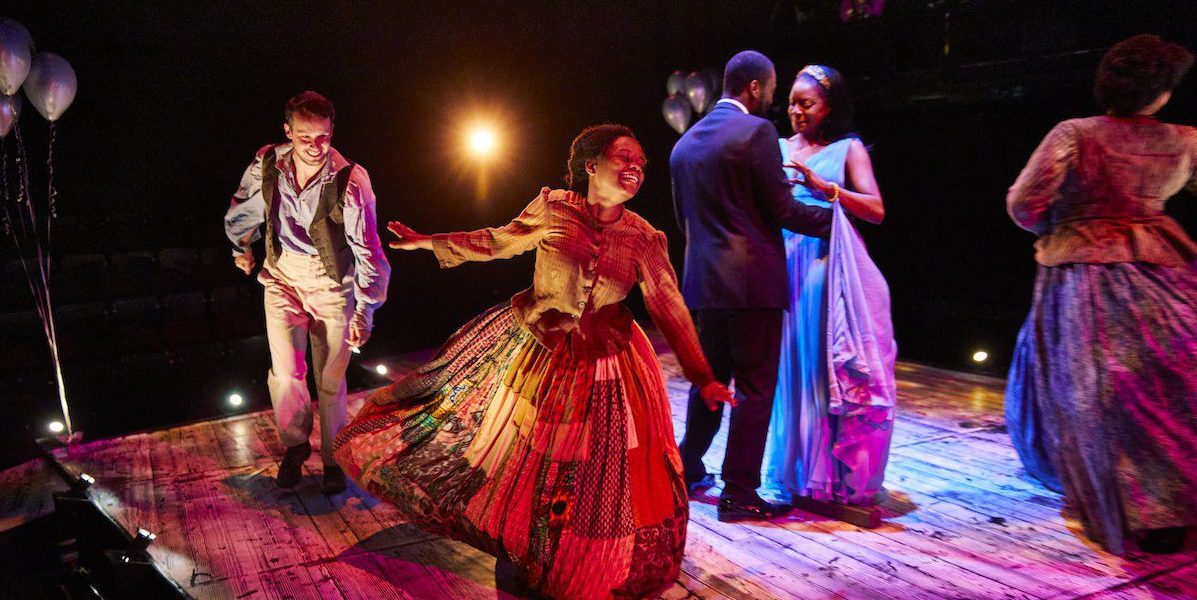This fascinating and challenging play by Winsome Pinnock starts from ideas stimulated by two paintings by JMW Turner. The first – ‘The Slave Ship’ – was probably a depiction of the Zong Massacre of 1781 when 130 black people were murdered by slave traders who threw them overboard near Jamaica because, it was alleged, the water supplies on the ship were running out. No-one was ever tried for this crime but the case became public because of a dispute between the shipowners and their insurers. The second painting – ‘Rockets and Blue Lights’ – is about efforts to prevent ships from being wrecked.
The play juxtaposes two main stories and various sub-plots – some set in the eighteenth century and some in the present day – which focus on the brutality of the slave trade and its effect on all swept up in it. We are asked to consider Turner’s artistic and moral motives in painting The Slave Ship. We glimpse the corrosive effect of their experience on a group of survivors of slavery and we examine what the legacy of slavery today might be through the experience of a group of actors – black and white – rehearsing a drama about slavery. It makes for a rich, if sometimes confusing, play that raises painful questions for us all.
The Dorfman Theatre is seated in the round and stage is set as an irregular shape of wooden planking, one end of which floods from time to time with a shallow sheet of water. There are a set of wire frame chairs and, at one end, a metal spiral staircase that allows for an extra entrance point for the actors. As the parallel and overlapping stories develop characters from the different strands begin to mingle and meet – in one memorable sequence a group from the past dancing a quadrille are joined by a modern couple dancing to an R&B track. And the play ends with an ‘ancient mariner’ figure reciting the names of a modern victims of racist violence. The director, Miranda Cromwell, more or less keeps the complex stories interweaving in ways that avoid letting the complexities obscure the key ideas.
It’s a big cast working really well as a collective and it seems harsh to pick out individuals but Kiza Deen, doubling as Lou and Olu, gives a convincing performance as the black actress lured from her lucrative role in a ropey sci-fi series (I was thinking Uhura in Star Trek) to star in a drama about a slave ship. She undergoes a convincing crisis of conscience about what the film-makers are really up to. Paul Bradley has two roles – he conjures up a sweaty and occasionally obnoxious Turner, who refuses to come clean about the ‘meaning’ of his paintings and as Roy, a colleague of Lou in the modern acting venture, he is involved in a crucial exchange with her about the mis-communications about racism that undermine good intentions in every walk of creative life. Karl Collins portrays a persuasive and tragic figure as Thomas and the redoubtable Cathy Tyson in four roles adds flavour and bite in every one.
This is a powerful drama that needs – it seems to me – to be seen more than once. I felt occasionally overwhelmed by the complexity of the storylines and the richness of the language but the power of the subject matter and the strength of the sense of injustice about how white people have treated black people for centuries make for a compelling night at the theatre.

